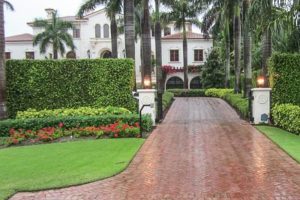The Enduring Case for Clay Brick in Sustainable Building Design
Sustainable buildings are the cornerstone of modern construction, designed to harmonize with the environment while providing lasting utility and comfort. These structures prioritize energy efficiency, water conservation, and the prudent use of resources, aiming for minimal environmental impact and sustainable living spaces that stand the test of time. Within this framework, clay brick emerges as a material not just of tradition, but of future-forward thinking, aligning perfectly with the principles of sustainable architecture.
Brick’s contribution to sustainable building design is manifold. Its natural clay composition, combined with enduring durability, ensures a lifecycle that spans centuries, not just decades. Unlike materials that diminish in quality and appearance over time, clay brick ages gracefully, its aesthetic value maturing along with its structural integrity. This longevity reduces the need for frequent replacements or repairs, cutting down on waste and the demand for new resources.
The competitive landscape of building materials is vast, yet clay brick stands out for its unique environmental benefits. The salvage market for brick, unlike those for fiber cement or vinyl siding, is vibrant and active, speaking to brick’s enduring value and recyclability. Clay brick can be repurposed in numerous ways — from being salvaged and reused in new construction to being crushed for sub-base materials or transformed into decorative landscaping mulch. This complete lifecycle recyclability sets brick apart from so-called “sustainable” materials that, despite their green claims, cannot match brick’s versatility and longevity.
The environmental policies of the Brick Industry Association (BIA) reflect a deep commitment to the planet’s stewardship. The industry is dedicated to discovering and implementing eco-friendly practices throughout the manufacturing process and ensuring that clay brick products contribute positively to the environment. The BIA’s commitment extends beyond production to encouraging the use of brick in creating sustainable living and working environments. This commitment is supported by adherence to strict environmental regulations and a partnership with construction professionals to promote responsible building practices.
In the realm of green building, clay brick contributes significantly to the sustainability goals of various rating systems, including LEED and ASHRAE 189.1. Despite the rigorous standards set by these systems, they often fail to fully recognize the multifunctional nature of materials like clay brick, which provide not just structural support but also contribute to energy efficiency, aesthetic value, and long-term durability. The recent launch of an industry-wide Environmental Product Declaration (EPD) for clay brick by the BIA is a step forward, providing concrete data on the material’s sustainable attributes and bolstering its role in eco-conscious construction.
In summary, the case for clay brick in sustainable building is built on its inherent qualities: energy efficiency, durability, and versatility. As architects, builders, and homeowners continue to lean towards more environmentally responsible materials, clay brick stands as a testament to the balance between human needs and environmental stewardship. Its proven performance, coupled with a commitment to future generations, makes clay brick an undeniable choice for those looking to build not just for today, but for a sustainable tomorrow.

